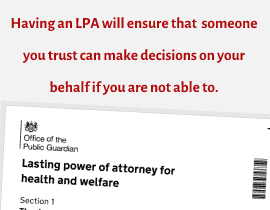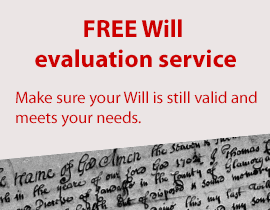The Four Types of Taxation in the UK
Corporation tax
Corporation tax is paid by limited companies on their profits.
Corporation tax is not payable by the self-employed but does apply to the following organisations, even if they are not limited companies:
- members’ clubs, societies and associations;
- trade associations;
- housing associations;
- groups of individuals carrying on a business but not as a partnership, e.g. co-operatives.
There are two rates of UK Corporation Tax: the small companies’ corporation tax and the main corporation tax rate – relate to the level of profit.
When a company’s profit level changes from the small companies’ rate to the main rate, marginal relief is available to ease the transition.
The table below shows the rates for 2012/13.
Profits | Rate applied | Rate payable on profits earned from 1 April 2012 |
| Up to £300,000 | Small companies’ rate | 20 per cent |
| £300,001 – £1,500,000 | Marginal relief from main rate between | 20 per cent and 24 per cent |
| £1,500,000+ | Main rate | 24 per cent |
Marginal Relief changes from 1 April 2012
From 1 April 2012 onwards, the terminology used to describe some Corporation Tax rates and reliefs changed. This table reflects the new terminology but for ease the changes are shown below:
- Small Profits Rate – previously Small Companies’ Rate
- Marginal Relief – previously Marginal Small Companies’ Relief
- Standard fraction – previously Marginal Small Companies’ Relief fraction
- Ring fence fraction – previously Marginal Small Companies’ Relief fraction (ring fence profits)
The main rate of Corporation Tax applies when profits (including ring fence profits) are at a rate exceeding £1,500,000, or where there is no claim to another rate, or where another rate does not apply.
Ring fence companies
*For companies with ring fence profits (income and gains from oil extraction activities or oil rights in the UK and UK Continental Shelf) these rates differ. The Small Profits Rate of tax on those profits is 19 per cent and the ring fence fraction is 11/400 for financial years starting 1 April 2010, 2011 and 2012. The main rate is 30 per cent for financial years starting on 1 April 2010 ,2011 and 2012.
Corporation Tax Rates Financial Years 2012,2013 and 2014.
Legislation will be introduced in the Finance Bill 2012 to reuce the following:
- the main rate of Corporation Tax for non ring fence profits to 24% for the Financial Year commencing 1st April 2012.
- the main rate of Corporation Tax for non ring fence profits to 23% for the Financial Year commencing 1st April 2013.
Finance Bill 2012 also sets the small profit rates at 20% for the Financial Year commencing 1st April 2012.
Legislation will be introduced in Finance Bill 2013 to reduce the main rate of Corporation Tax for non ring fence profits to 22% for the Financial Year commencing 1st April 2014.
Capital Gains Tax
CGT is a tax on capital ‘gains’. If when you sell or give away an asset it has increased in value, you may be taxable on the ‘gain’ (profit). This doesn’t apply when you sell personal belongings worth £6,000 or less or in most cases, your main home.
You may have to pay CGT if for example, you:
- sell, give away, exchange or otherwise dispose of (cease to own) an asset or part of an asset
- receive money from an asset – for example compensation for a damaged asset
You don’t have to pay CGT on:
- your car
- your main home – provided certain conditions are met
- ISAs or PEPs
- UK Government gilts (bonds)
- personal belongings worth £6,000 or less when you sell them
- betting, lottery or pools winnings
- money which forms part of your income for income tax purposes
These are some points to bear in mind:
- if you are married or in a civil partnership and living together you can transfer assets to your husband, wife or civil partner without having to pay CGT
- you can’t give assets to your children or others or sell them assets cheaply without having to consider CGT
- if you make a loss you may be able to make a claim for that loss and deduct it from other gains, but only if the asset normally attracts CGT – for example you cannot set a loss on selling your car against gains from disposing of other assets
- if someone dies and leaves their belongings to their beneficiaries, there is no CGT to pay at that time – however if an asset is later disposed of by a beneficiary, any CGT they may have to pay will be based on the difference between the market value at the time of death and the value at the time of disposal
- Each tax year you have an annual tax-free allowance-know as the ‘Annual Exemp Amount’. You only pay tax on total net gains above this amount, using the Capital Gains Tax ratefor that tax year. You may qualify for Indexation Allowance for certain disposals before 6 April 2008.
- Nearly everyone who lives in the UK will get the Annual Exempt Amount. There are different Annual Exempt Amounts for individuals (including personal representatives) and most trustees. The amounts are set for each tax year. Currently the allowance for most Trustees is half the individual’s allowance.
Rates for Capital Gains Tax
2011-12
The following Capital Gains Tax rates apply:
- 18 per cent and 28 per cent tax rates for individuals (the tax rate you use depends on the total amount of your taxable income, so you need to work this out first )
- 28 per cent for trustees or for personal representatives of someone who has died
- 10 per cent for gains qualifying for Entrepreneurs’ Relief
2010-2011
For gains on or before 22nd June 2010
Capital Gains Tax is charged at a flat rate of 18 per cent.
For capital gains made from 23rd June to 5th April 2011
The following Capital Gains Tax rates apply to gains after this date:
- 18 per cent and 28 per cent tax rates for individuals (the tax rate you use depends on the total amount of your taxable income, so you need to work this out first)
- 28 per cent for trustees or for personal representatives of someone who has died
- 10 per cent for gains qualifying for Entrepreneurs’ Relief
Inheritance Tax
A tax on the value of a person’s estate on death and on certain gifts made by an individual during their lifetime. Broadly speaking your estate is everything you own at the time of your death, less what you owe. It’s also sometimes payable on assets you may have given away during your lifetime. Assets include things like property, possessions, money and investments.
The inheritance tax threshold is the amount above which inheritance tax becomes payable. If the estate, including any assets held in trust and gifts made within seven years of death, is less than the threshold, no inheritance tax will be due on it.
It only applies if the taxable value of your estate is above the threshold which for 2012/13 tax year is £325,000. It is only payable on the excess above this nil rate band.
The rate at which Inheritance Tax is charged is 40%.
Income tax
Income Tax is a tax on income. Not all income is taxable – and you’re only taxed on ‘taxable income’ above a certain level. Even then, there are other reliefs and allowances that can reduce your Income Tax bill – and in some cases mean you have no tax to pay.
Taxable income includes:
- earnings from employment
- earnings from self-employment
- most pensions income (State, company and personal pensions)
- interest on most savings
- income from shares (dividends)
- rental income
- income paid to you from a trust
Non-taxable income
There are certain sorts of income that you never pay tax on. These include certain benefits, income from tax exempt accounts, Working Tax Credits (WTC) and premium bond wins.. These income sources are ignored altogether when working out how much Income Tax you may need to pay.
How much Income Tax you pay.
After your allowable expenses and any tax- free allowances have been taken into account, the amount of tax you pay is calculated using different tax rates and a series of tax bands.
Income Tax rates 2012-2013 by tax band and type of income
Income Tax band | Income Tax rate on earned income (see note) | Income Tax rate on savings | Income Tax rate on dividends |
| £0 to £2,710 Starting rate for savings | Not available | 10%* | N/A see basic rate band |
| £0 to £34,370 Basic rate: | 20% | 20% | 10% |
| £34,371 to £150,000 Higher rate: | 40% | 40% | 32.5% |
| Over £150,000 additional rate | 50% | 50% | 42.5% |
Because the rate of Income Tax you pay on savings is worked out after any non-savings income has been taken into account, if your non-savings income is less than the starting rate for savings limit (£2,710) – or if savings and investments are your only source of income – your savings income will be taxed at the 10 per cent starting rate up to the limit. But if you already have non-savings income which takes you above the starting rate limit, all of your savings will be taxed at the 20 per cent basic rate, the 40 per cent higher rate or, the 50 percent additional rate, depending on your total income
Remember: the tax band applies to your income after tax allowances and any reliefs have been taken into account; you’re not taxed on all of your income.
‘Non savings income’ includes income from employment or self-employment, most pension income and rental income.
‘Dividends’ means income from shares in UK companies.
Savings and dividend income is added to your other taxable income and taxed last. This means you pay tax on these sorts of income based on your highest Income Tax band.
Income Tax rates and Allowances for 2012-2013 and 2013 -2014
As announced at Budget 2011, the income tax allowance for those aged under 65 will increase by £630 in cash terms to £8,105 in 2012-13. There will be a corresponding £630 cash decrease and the basic rate limit, will therefore remain unchanged in 2012-13 at £42,475. legislation will be in Finance Bill 2012.
For 2013-14, the main rates of income tax will be the 20 per cent basic rate, the 40 percent higher rate and the additional rate will be reduced from 50% to 45%.
For 2013-14 the personal allowance for those aged under 65 will be set at £9,205 and the basic rate limit at £32,245. The Class 1 Upper Earnings Limit and the Class 4 Upper Profits Limit for National Insurance contributions will be aligned with the point at which the higher rate tax becomes payable (£41,450).
From 2013-14, the age-related personal allowances will not be increased and their availability will be restricted to people born on or before:
- 5 April 1948 for the allowance worth £10,500; and
- 5 April 1938 for the allowance worth £10,660.
Legislation will be included in Finance Bill 2012. People born on or after 6 April 1948 will be entitled to the personal allowance of £9,205 for 2013-14.
Cap on unlimited tax reliefs
Legislation will be introduced in Finance Bill 2013 to apply a cap on income tax reliefs claimed by individuals from 6 April 2013. The cap will apply only to reliefs which are currently unlimited. For anyone seeking to claim more than £50,000 in reliefs, a cap will be set at 25 per cent of income (or £50,000, whichever is greater) Draft legislation will be published for consultation later this year




